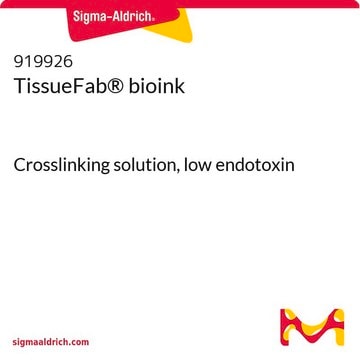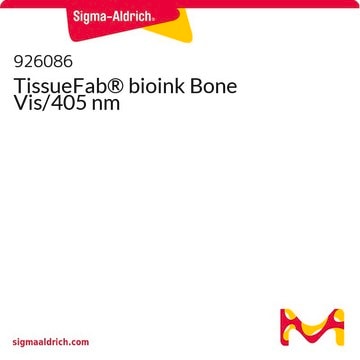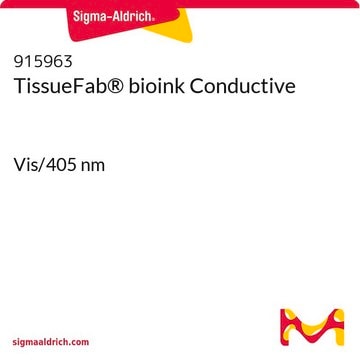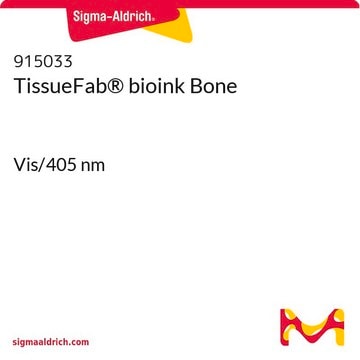推荐产品
品質等級
描述
suitable for 3D bioprinting applications
with LAP photoinitiator
無菌
sterile-filtered
形狀
viscous liquid
雜質
≤5 CFU/g Bioburden (Fungal)
≤5 CFU/g Bioburden (Total Aerobic)
<50 EU/mL Endotoxin
顏色
colorless to pale yellow
粒徑
0.2 μm
pH值
6.5-7.5
應用
3D bioprinting
儲存溫度
2-8°C
正在寻找类似产品? 访问 产品对比指南
應用
Gelatin methacryloyl (GelMA) is a polymerizable hydrogel material derived from natural extracellular matrix (ECM) components. Due to its low cost, abundance, and retention of natural cell binding motifs, gelatin has become a highly sought material for tissue engineering applications. The addition of photocrosslinkable methacrylamide functional groups in GelMA allows the synthesis of biocompatible, biodegradable, and non-immunogenic hydrogels that are stable in biologically relevant conditions and promote cell adhesion, spreading, and proliferation.
法律資訊
儲存類別代碼
10 - Combustible liquids
水污染物質分類(WGK)
WGK 3
商品
Bioinks enable 3D bioprinting of tissue constructs for drug screening and transplantation; select suitable bioinks for specific tissue engineering.
生物墨水可3D生物打印形成功能组织结构,从而应用于药物筛选、疾病建模和体外移植。针对特定组织工程应用选择生物墨水和打印方法。
Learn how 3D bioprinting is revolutionizing drug discovery with highly-controllable cell co-culture, printable biomaterials, and its potential to simulate tissues and organs. This review paper also compares 3D bioprinting to other advanced biomimetic techniques such as organoids and organ chips.
我们的科学家团队拥有各种研究领域经验,包括生命科学、材料科学、化学合成、色谱、分析及许多其他领域.
联系技术服务部门